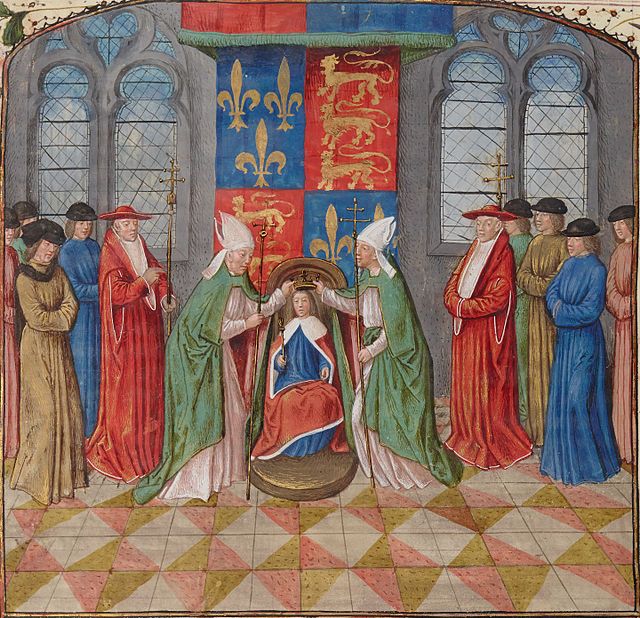Jack Cade's Rebellion was a popular revolt in 1450 against the government of England, which took place in the south-east of the country between the months of April and July. It stemmed from local grievances regarding the corruption, maladministration and abuse of power of the king's closest advisors and local officials, as well as recent military losses in France during the Hundred Years' War. Leading an army of men from south-eastern England, the rebellion's leader Jack Cade marched on London in order to force the government to reform the administration and remove from power the "traitors" deemed responsible for bad governance. Apart from the Cornish rebellion of 1497, it was the largest popular uprising to take place in England during the 15th century.
Jack Cade's Rebellion, depicted in a mural of the history of the Old Kent Road
Lord Saye and Sele brought before Jack Cade, painting by Charles Lucy
Henry VI was King of England from 1422 to 1461 and again from 1470 to 1471, and disputed King of France from 1422 to 1453. The only child of Henry V, he succeeded to the English throne upon his father's death, at the age of nine months; and succeeded to the French throne on the death of his maternal grandfather, Charles VI, shortly afterwards.
Miniature in the Talbot Shrewsbury Book, 1444–1445
Henry VI, aged nine months, shown being placed in the care of the Earl of Warwick
A mid-15th-century depiction of Henry being crowned King of France at Notre-Dame de Paris on 16 December 1431
Queen Margaret of Anjou, wife of Henry VI, as depicted in the Talbot Shrewsbury Book, 1444–45






